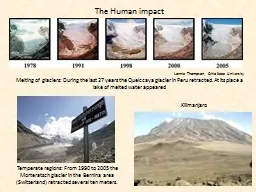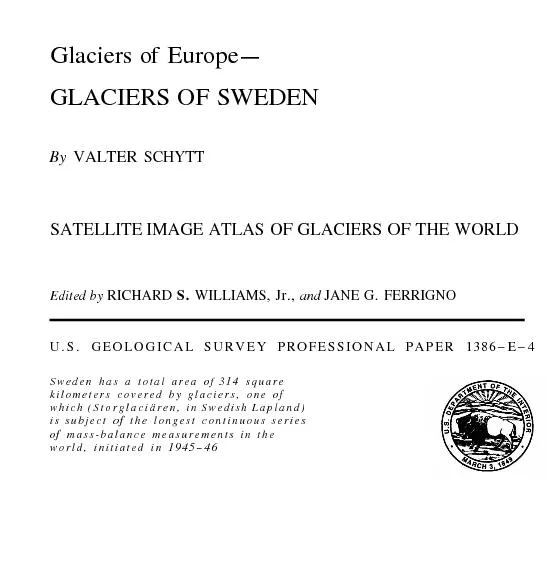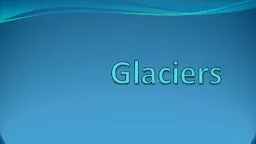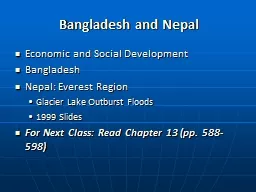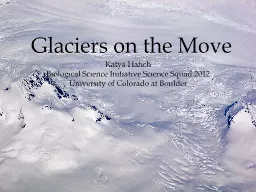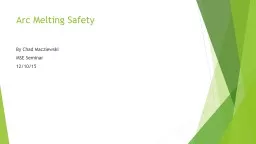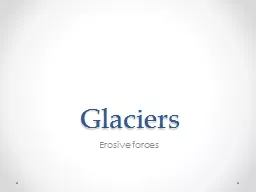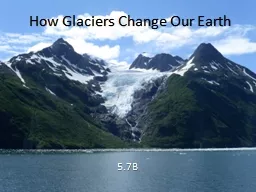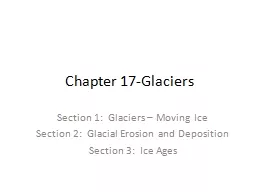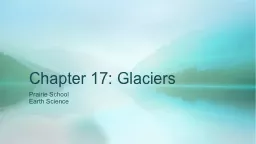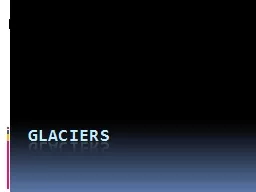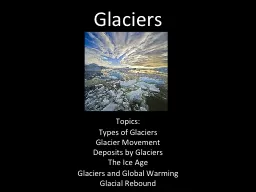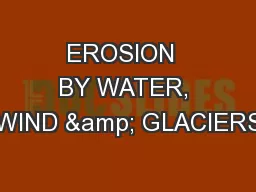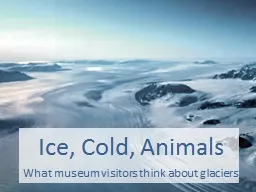PPT-Melting of glaciers: During the last 27 years the Quelccaya
Author : kittie-lecroy | Published Date : 2016-08-04
Lonnie Thompson Ohio State University Temperate regions From 1990 to 2005 the Morteratsch glacier in the Bernina area Switzerland retracted several ten meters
Presentation Embed Code
Download Presentation
Download Presentation The PPT/PDF document "Melting of glaciers: During the last 27 ..." is the property of its rightful owner. Permission is granted to download and print the materials on this website for personal, non-commercial use only, and to display it on your personal computer provided you do not modify the materials and that you retain all copyright notices contained in the materials. By downloading content from our website, you accept the terms of this agreement.
Melting of glaciers: During the last 27 years the Quelccaya: Transcript
Download Rules Of Document
"Melting of glaciers: During the last 27 years the Quelccaya"The content belongs to its owner. You may download and print it for personal use, without modification, and keep all copyright notices. By downloading, you agree to these terms.
Related Documents

